#guofeng
Text
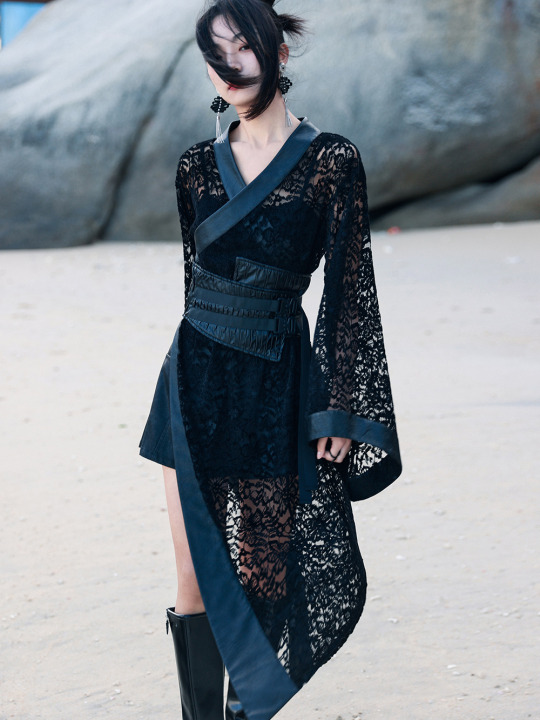

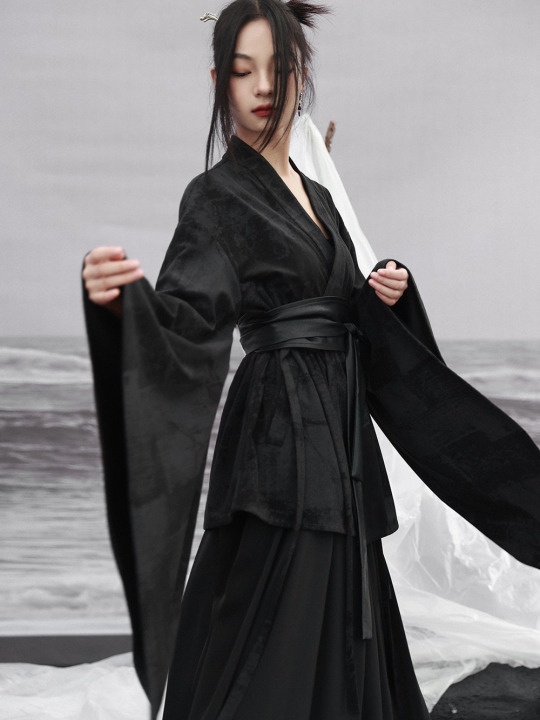





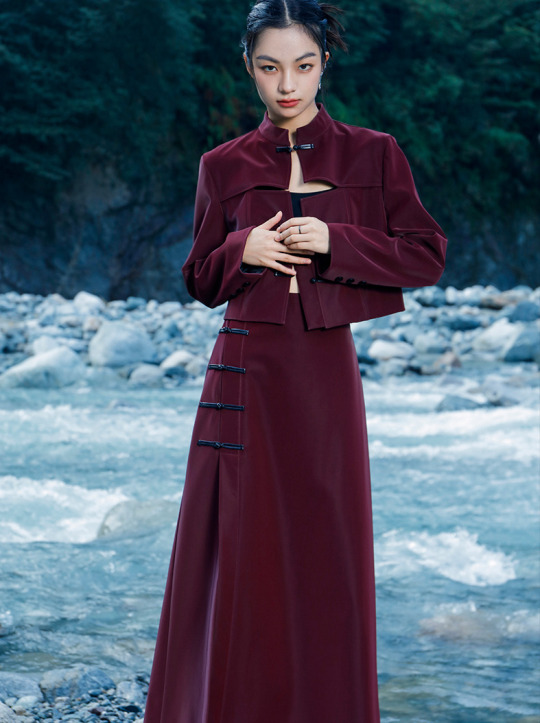
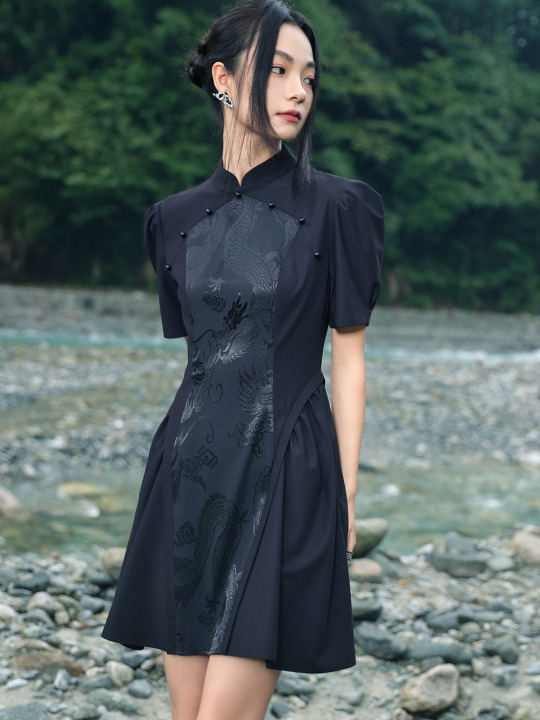





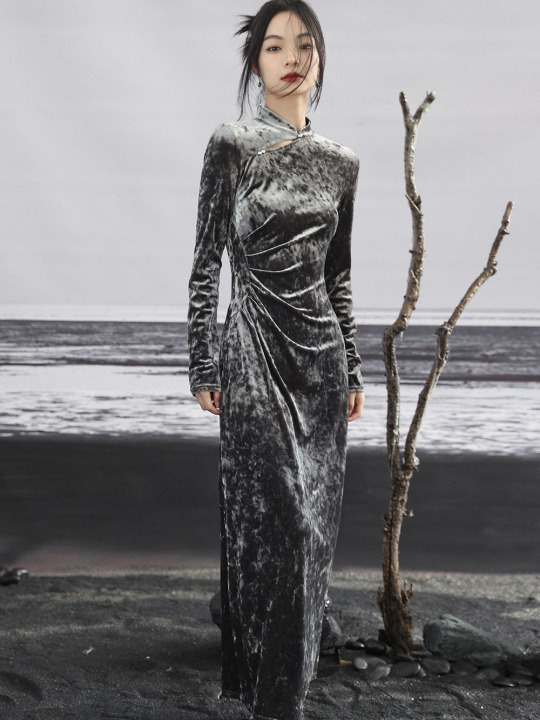

Since there's quite a lot of interest in Chinese-inspired cyberpunk and adjacent aesthetics, just wanted to share these neat "Chinese style meets the Matrix"-esque looks from popular brand 大青龙肆/Da Qing Long Si. There's also an English website here.
#大青龙肆#daqinglongsi#hanfu inspired#hanyuansu#qipao inspired#and etc#guofeng#xinzhongshi#cyberpunk#taobao#recs#chinese fashion#chinese clothing#chinese culture#china
1K notes
·
View notes
Text
A transformation
[eng by me]
579 notes
·
View notes
Photo
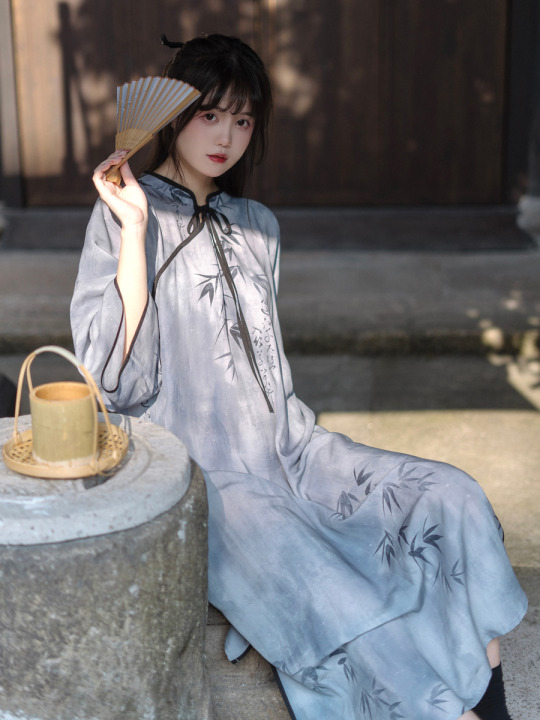


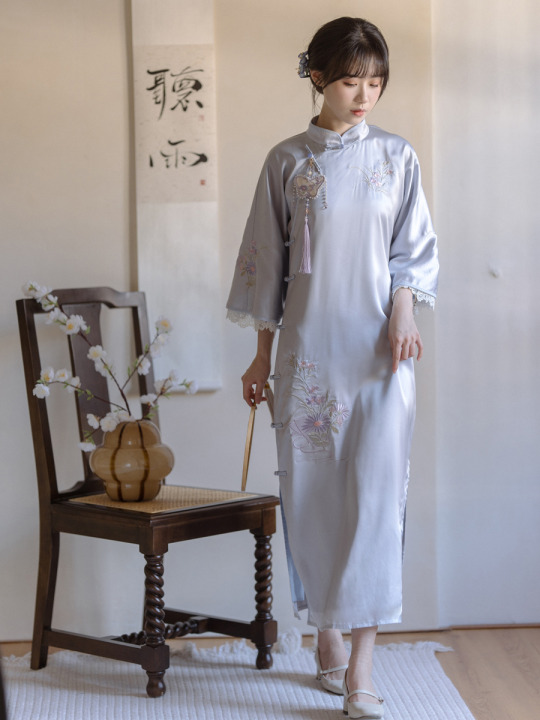
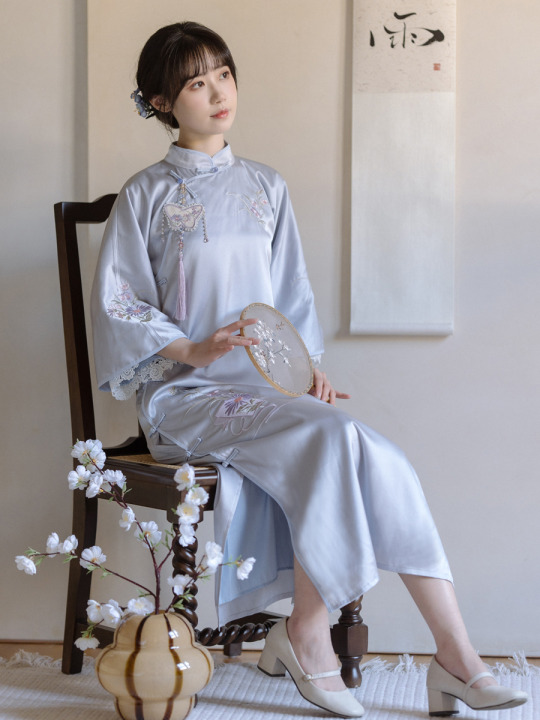

chinese fashion by 川黛时光
237 notes
·
View notes
Text
A guzhuang photoshoot
#douyin#video#tiktok#guofeng#guzhuang#hanfu#photoshoot#bah. typo in the video subs.#whatever ... it's not important
435 notes
·
View notes
Text
A Compilation of Chinese Period drama OSTs that are inspired by Classical Poetry- Part 3
Part 1, Part 2
.
More in Confirmed List
8. The Long River
"Life Passes Like a Dream (浮生若梦)" (Ending theme) by Li Bai, performed by Wang Zhenhua
youtube
.
9. Oh My General (2017)
Yang Lin [杨蔺] - Pride of the Fishermen [渔家傲] by Fan Zhongyan
I couldn't find a way to share an mp3, but you can find it here and listen from there.
.
10. Dream of the Red Chambers (1987)

Source

Source
Sadly I couldn't find any other songs he composed based on the original poems for the drama, except the one below. If you know more, please do share! 🥺 🙏
Burial of Flowers
youtube
A famous cover by Tong Liya
I highly recommend listening to this chilling cover done for the kiddie drama version of Red Chambers as well.
.
11. Romance of the Three Kingdoms (1994)
滚滚长江东逝水 Gǔngǔn Chángjiāng Dōngshì Shuǐ (The Billowing Yangtze River Flows East) by Ming Dynasty poet Yang Shen, performed by Yang Hongji
.
短歌行 Duǎngē Xíng (A Short Song) by Cao Cao; performed by Yang Hongji
Extra: Rendition of the same scene in Three Kingdoms (2010) with Eng translation and in Advisors Alliance (2017)
youtube
.
子夜四时歌 Zǐyè Sìshí Gē (The Midnight Song) Lyrics adapted from a Southern Dynasties era poem; performed in a Wu accent. Played during Liu Bei and Sun Shangxiang's wedding scene in episode 43. Source
A translated fanvid
youtube
.
七步诗 Qībù Shī (The Seven Steps Poem) by Cao Zhi; performed by Liu Huan
(Aka the Bean Poem. Here's a nice comparison of the same scene in different dramas by another Tumblr user!)
youtube
.
丈夫歌 Zhàngfū Gē (A Song for Men) by Luo Guanzhong; performed by Lü Jianhong
youtube
.
There are more but this is all I was able to find :(
.
12. The Advisors Alliance (2017)
In the same spirit (their version of Duan Ge Xing is already shared above),
十五从军征 At Fifteen I Joined the Army on Expedition by unknown Han dynasty poet, performed by Jin Yushan (金语衫) (not sure, Wikipedia says Jin Yubin) Here's a cartoon version as well.
The thumbnail of the vid is incorrect for some reason btw. It's from AA not 3K.
youtube
.
怨歌行Yuan Ge Xing (Song of Regret) by Ban Jieyu, performed by Yeung Tung & Lu Moyi
.
13. My Fair Princess (1998)
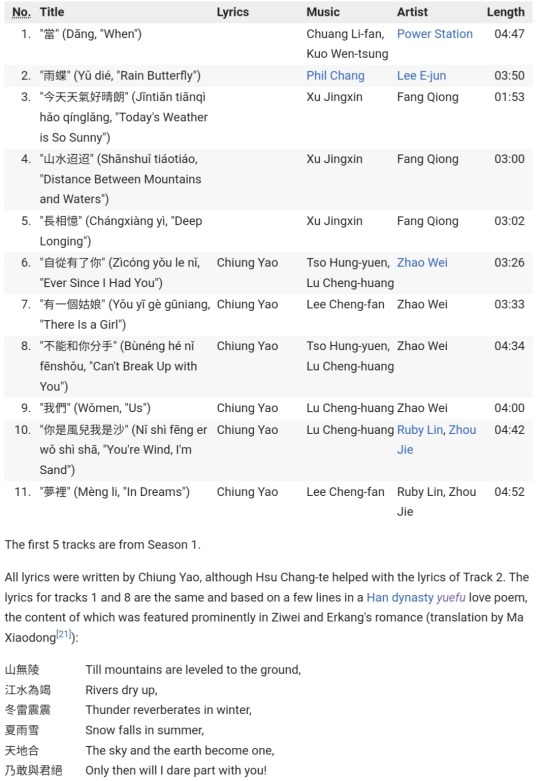
youtube
.
14. Shaolin Wendao (2016)
Not a poem, but the ost is made out of the Mahayana Buddhist Sutra Da Bei Zhou/Great Compassion Mantra/Nilakantha Dharani.
This was one of the first songs I have listened on YouTube, even before I started watching Cdramas etc. It has always brought me great sense of calm and peace. Only recently, more than like 5 years later I finally found out where it is from.
Da Bei Zhou (大悲咒) by Jing Shan Yuan (敬善媛)
The scene from drama
Full ost:
youtube
.
15. Journey to the West (2011)
Similarly, the opening ost was taken from the mantra of the Mahayana Buddhist scripture Heart Sutra.
Xin Jing (心经) performed by Yang Xiaolin
youtube
.
My other posts
#Youtube#My goodness I am so tired#classical Chinese poetry#drama osts#Cdrama#Chinese drama#gufeng#guofeng#The Long River#romance of the three kingdoms#oh my general#dream of the red chamber#my fair princess#shaolin wendao#journey to the west#three kingdoms#the advisors alliance#poetry
78 notes
·
View notes
Text
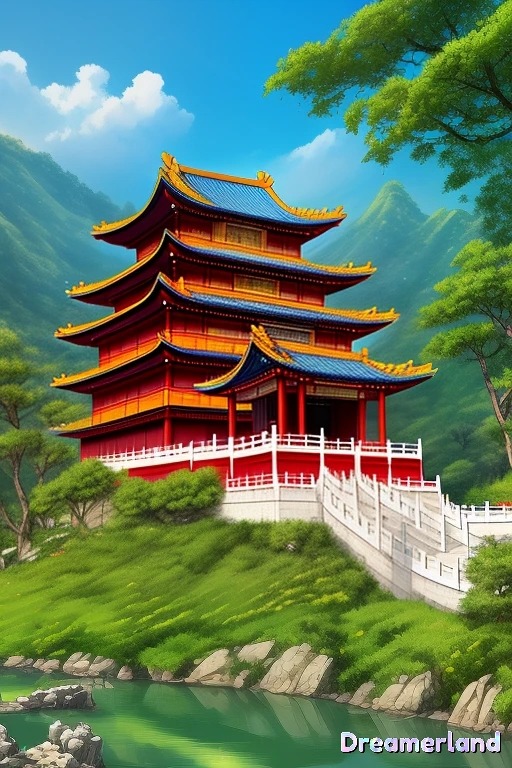
#parameters#guofeng#building#(bird:0.8)#chinese style#illustration#masterpiece#best quality#no humans#<lora:Chinese style illustration v2:0.7>#Negative prompt: (low quality#worst quality:1.4)#(bad anatomy)#extra digit#cropped#jpeg artifacts#signature#watermark#username#blurry#Steps: 24#Sampler: DPM++ 2M#CFG scale: 6.5#Seed: 1371832407#Size: 512x768#Model hash: e3edb8a26f#Model: 插画--ghostmix_v20Bakedvae#Clip skip: 2#Lora hashes: “Chinese style illustration v2: c92890eedb10”#Version: v1.3.2
0 notes
Text
The Rime of the Ancient Bargeman
from Jadeite Redolence
Guofeng Wang, Ziyu Che, HOYO-MiX
#genshin#genshin impact#jadeite redolence#overworld#chenyu vale#vehicles#bamboo raft#guofeng wang#<- did vocals#ziyu che#plays when riding the bamboo raft in chenyu vale with sun rao
14 notes
·
View notes
Text

1978 China, Guangdong, Guangzhou
#1978#China#Guangdong#Guangzhou#Hua Guofeng#vintage#analog#analog photography#film#film photography#1970s#photography#original photographers#streetphotography#blackandwhite#pierre wayser
13 notes
·
View notes
Text
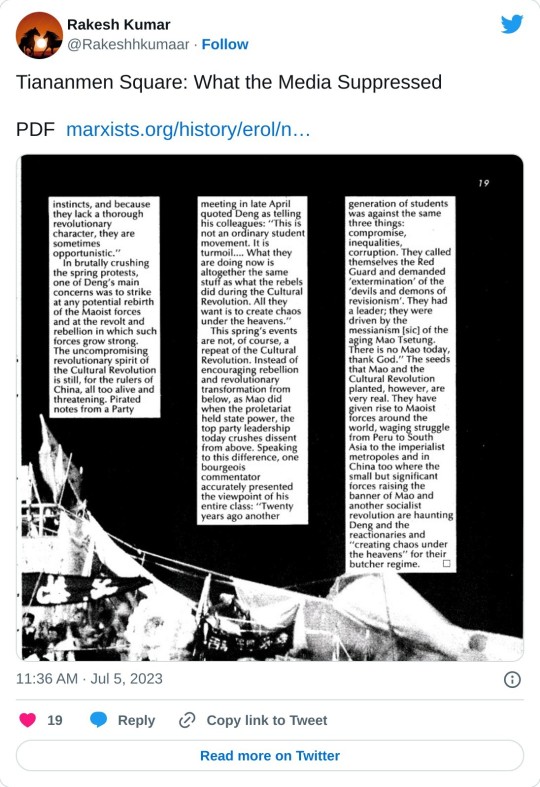
Tiananmen Square: What The Media Suppressed - Published in A World To Win Magazine, Issue 14, 1989
Mao Tsetung's cadres were clean,
The Gang of Four's cadres were brave,
Hua Guofeng's cadres were nowhere to be seen, Deng Xiaoping's cadres are all millionaires.
- Poem from Tiananmen Square, Spring 1989
#China#Mao#Maoism#MLM#marxism#marxism leninism maoism#tiananmen square#tiananmen massacre#PRC#Deng#deng xiaoping#Mao Zedong#gang of four#Hua Guofeng#capitalism#imperialism#communism#revolutionary#revolution#socialism#maoist#communist
29 notes
·
View notes
Text

Emotion Practice-2
:-(
2 notes
·
View notes
Photo




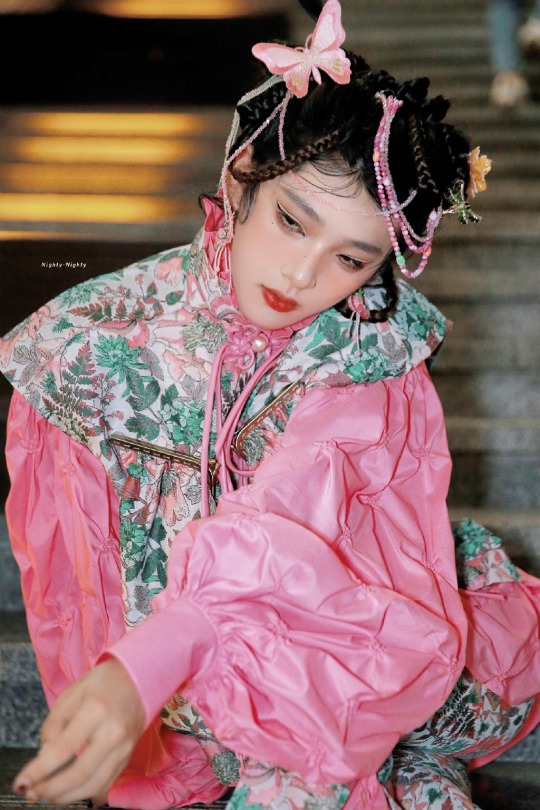
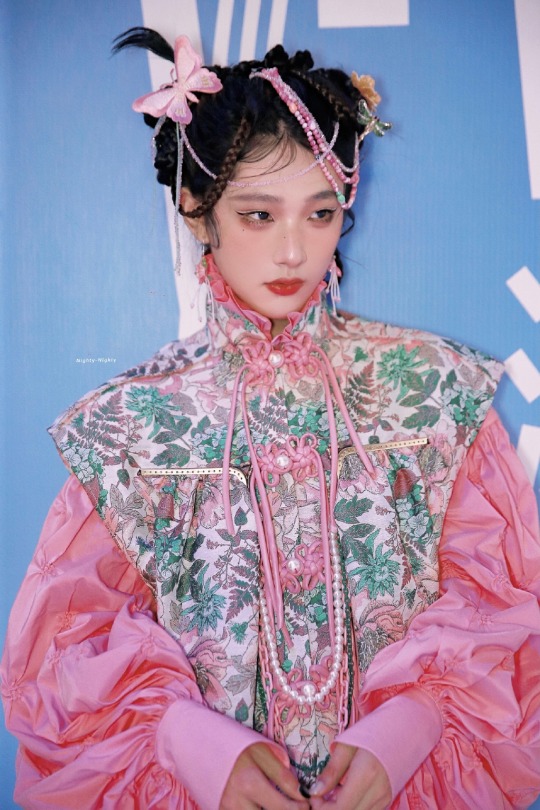
胡烨韬hu yetao
658 notes
·
View notes
Text
Latin dance x Guofeng (国风)
song: 兰亭序 - 周杰伦 (Jay Chou)
#douyin#video#tiktok#also bc it came up on a previous video: 'latin dance' is an umbrella category in ballroom/competitive dance#it's specifically not attributed to any latin american country!#guofeng just means 'national style'#(i.e 'chinese vibes')
890 notes
·
View notes
Text
15+ Rare Images of The Fall of Liu Shaoqi & the "capitalist roaders" during the Cultural Revolution
New Post has been published on https://china-underground.com/2022/07/24/images-liu-shaoqi-the-capitalist-roaders-during-the-cultural-revolution/
15+ Rare Images of The Fall of Liu Shaoqi & the "capitalist roaders" during the Cultural Revolution
During the Cultural Revolution, Liu Shaoqi, an eminent Chinese revolutionary, politician, and theorist, was expelled, imprisoned, and tortured to death
The Cultural Revolution was a sociopolitical movement in China launched by Mao Zedong in 1966 and lasted until his death in 1976 to preserve Chinese communism by removing remnants of capitalist and traditional elements from Chinese society and re-establishing Mao Zedong Thought as the dominant ideology in the People’s Republic of China.
The Revolution signified Mao’s return to the central position of power as Chairman of the Communist Party of China (CPC) after a period of less radical leadership to recover from the failings of the Great Leap Forward, which caused the Great Chinese Famine (1959-1961). However, the Revolution failed to fulfill its primary objectives. Mao, who launched the movement with the support of the Cultural Revolution Group in May 1966, claimed that bourgeois elements had infiltrated the government and society with the intention of restoring capitalism.
Related article: The Four Pests Campaign to Wipe Out the Sparrow
In the early days of the Cultural Revolution, Liu Shaoqi also brought Red Guard armbands to meet the Red Guards. The picture shows Liu Shaoqi with Zhou Enlai and Deng Xiaoping
Mao urged young people to “bombard the headquarters�� and said that “rebellion is acceptable.” The country’s youth responded by organizing Red Guards and “rebel organizations.” The Little Red Book, which became a hallowed scripture for Mao’s personality cult, was constructed from a selection of Mao’s sayings. They periodically organized “denunciation rallies” against revisionists, seizing control from local governments and CPC sections until creating revolutionary committees in 1967.
Related article: 20+ Chinese Propaganda Movies
Liu Shaoqi and Jiang Qing, 1966 the Tiananmen Gate. JIang Qing was the wife of Mao and member of the Gang of Four
Mao Zedong and Lin Biao meet the Red Guards
Mao Zedong, Zhou Enlai, Lin Biao, JiangQing among the Red Guards
The committees frequently broke into competing factions and engaged in armed confrontations known as “violent struggles,” to which the army was dispatched to restore order. Mao declared the Revolution completed in 1969, although the active phase would remain until at least 1971 when Lin Biao escaped and perished in an aircraft accident, suspected of a bungled coup against Mao. The Gang of Four took control in 1972, and the Cultural Revolution lasted until Mao’s death and the arrest of the members of the group in 1976.
The Cultural Revolution was marked by bloodshed and anarchy. Death toll claims range greatly, with estimates ranging from hundreds of thousands to millions of people killed during the Revolution. Beginning with the Red August in Beijing, massacres happened across the country, including the Guangxi Massacre, which included extensive cannibalism; the Inner Mongolia incident; the Guangdong Massacre; the Yunnan Massacres; and the Hunan Massacres.
Related article: the destruction of a Confucian temple triggers the Cultural Revolution
The Red Guards damaged historical treasures and ransacked cultural and religious places. The Cultural Revolution coincided with the breakdown of the Banqiao Dam in 1975, one of the world’s largest technical disasters. Meanwhile, tens of millions of people were persecuted: senior officials, most notably Chinese President Liu Shaoqi, along with Deng Xiaoping, Peng Dehuai, and He Long, were purged or exiled; millions were accused of belonging to the Five Black Categories and were subjected to public humiliation, imprisonment, torture, hard labor, property seizure, and, in extreme cases, execution or harassment into suicide.
Propaganda poster criticizing Liu Shaoqi during the Cultural Revolution
Liu Shaoqi (24 November 1898 – 12 November 1969) was a revolutionary, politician, and thinker. From 1954 to 1959, he served as the NPC Standing Committee Chairman. From 1956 to 1966, he served as the Chinese Communist Party’s First Vice Chairman. From 1959 to 1968, he served as the de facto head of state and enacted policies for China’s economic rebuilding.
Liu had prominent posts in the Chinese government for 15 years, ranking third only to Premier Zhou Enlai and Chairman Mao Zedong. Liu, who was once viewed as Mao’s heir, displeased him in the early 1960s before the Cultural Revolution. From 1966 forward, Mao reprimanded Liu before having him expelled. As the “commander of China’s bourgeoisie headquarters,” China’s leading “capitalist-roader,” and a traitor to the revolution, Liu vanished from the public eye in 1968.
uring the Cultural Revolution (1966-1976), Mao launched a political campaign to liquidate Liu Shaoqi: “Down with China’s Khrushchev”
Approval document issued by Mao’s order (No. 155 of 1968). The photocopies of the documents are taken from the collections of the East Asian Libraries of the famous American universities.
During the Cultural Revolution, he was expelled, imprisoned, and tortured to death, but Deng Xiaoping’s administration restored his reputation after his passing in 1980 and gave him a national memorial service.
Even Song Renqiong, a general in the People’s Liberation Army of the People’s Republic of China (PRC) and one of the Eight Elders of the Chinese Communist Party, was persecuted and severely criticized during the Cultural Revolution. He was the father of Song Binbin, also known as Song Yaowu, a senior leader in the Chinese Red Guards.
Intellectuals were dubbed the “Stinking Old Ninth” and were extensively persecuted—notable professors and scientists like as Lao She, Fu Lei, Yao Tongbin, and Zhao Jiuzhang were assassinated or committed suicide. Schools and universities were closed, and college entrance tests were postponed. The Down to the Countryside Movement transported almost 10 million urban smart adolescents to the countryside. In December 1978, Deng Xiaoping took over as China’s new paramount leader, succeeding Chairman Hua Guofeng, and launched the “Boluan Fanzheng” program, which progressively destroyed the Maoist policies associated with the Cultural Revolution and restored order to the country. Deng and his supporters then initiated the momentous Reforms and Opening-Up program, ushering in a new era in Chinese history. The CCP admitted in 1981 that the Cultural Revolution was incorrect and was “responsible for the most severe setback and heaviest losses experienced by the people, the country, and the party since the establishment of the People’s Republic.”
All images have been augmented and partially cleaned up or restored. However, the quality of some of the original pictures was very poor. We couldn’t find any better-resolution images.
Full body photo of Liu Shaoqi after his death in Kaifeng
Topics: Liu Shaoqi death, liu shaoqi cultural revolution, cultural revolution purges
Source: wikipedia, Chinese web
#CulturalRevolution, #DengXiaoping, #GangOfFour, #GreatLeapForward, #HeLong, #HuaGuofeng, #LinBiao, #LiuShaoqi, #MaoZedong, #PengDehuai, #Propaganda, #RedGuards, #SongRenqiong
#Cultural Revolution#Deng Xiaoping#Gang of Four#great leap forward#He Long#Hua Guofeng#lin biao#liu shaoqi#mao zedong#Peng Dehuai#propaganda#red guards#Song Renqiong
0 notes
Note
Hiii, what hanfu is suitable for high-tea event? The theme was black, white and gold. What words i need to type in taobao. please help me☹️
Hi, thanks for the question, and sorry for taking ages to reply!
There’s no concept of a “high-tea event” in Chinese culture, but from looking at photos of such events, I think a two-piece hanfu outfit with a flouncy skirt would be most suitable. Ming-style hanfu probably work best here. You can search on Taobao using the keywords 汉服/hanfu combined with the theme colors: 黑/hei (black), 白/bai (white), 金/jin (gold).
Here are a few hanfu from Taobao that I think would suit the event in question:
1. These two Ming-style outfits comprised of high-collar puff-sleeve shan & modified mamianqun, from 拟梦/Ni Meng:


2. More examples of the classy Ming-style high-collar shan & mamianqun combo, from 承前国风/Chengqian Guofeng:


3. Generally speaking, mamianqun are great for gold (and silver) details. You can’t go wrong by pairing a top with a gold-embellished mamianqun, like this one from 若兰兮/Ruo Lan Xi:
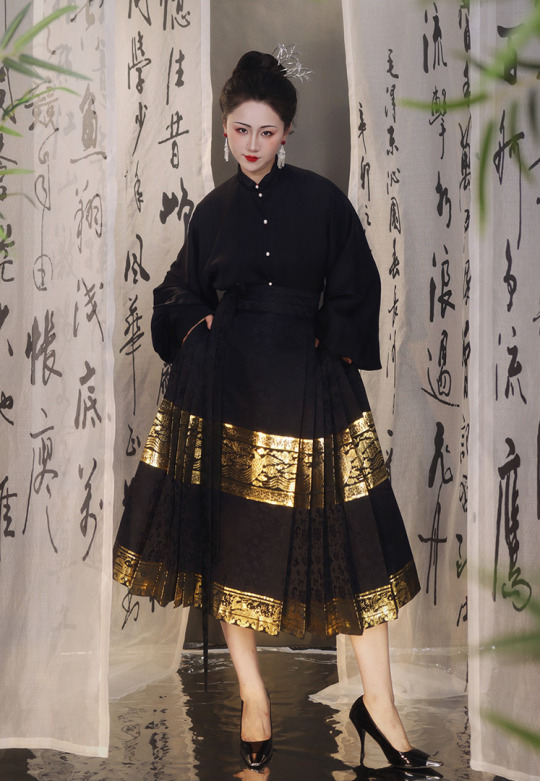
4. For a non-Ming style, there’s this elegant Song-style outfit with black & white floral motifs from 织造司/Zhi Zao Si. You can pair it with gold accessories (hairpin, brooch, earrings, etc.):

5. For a more “hybrid” look, this super cute Ming-style hanyuansu outfit from 瞳莞/Tong Guan has elements of ruffles, lace, and ribbons. Again, you can accessorize with gold:

If anyone has more recs, please feel free to share!
Hope this helps! ^^
#hanfu#hanyuansu#hanfu recommendations#high tea#black#white#gold#black & white#colors#taobao#reply#ask#reference#china#拟梦#承前国风#若兰兮#织造司#瞳莞#chinese fashion#chinese clothing#chinese culture
420 notes
·
View notes
Text

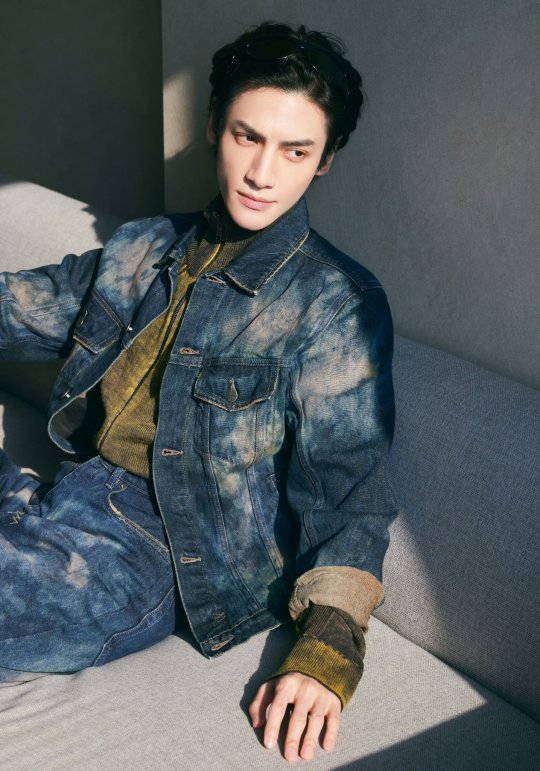




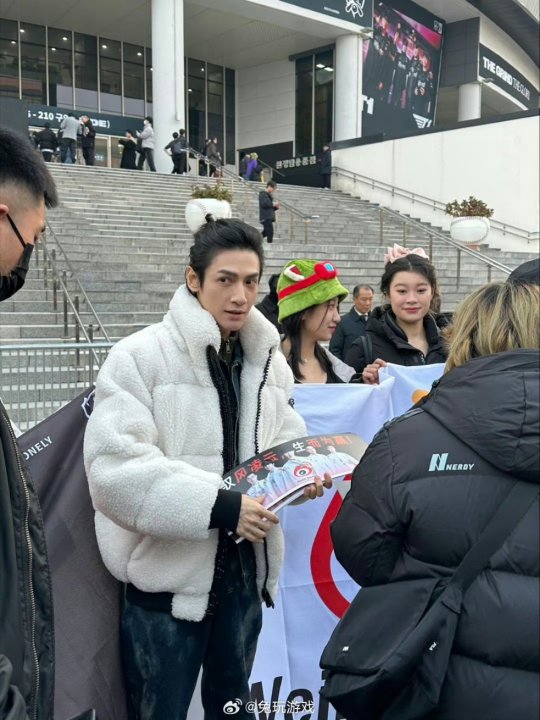
LoL Guofeng ambassador attends 2023 world championship in Seoul.
Bonus :fan boy xixi hands out banners
24 notes
·
View notes
Text
Chenyu Fisherman's Song
from Jadeite Redolence
Guofeng Wang, Yuxi Wang, HOYO-MiX
#genshin#genshin impact#jadeite redolence#overworld#chenyu vale#bamboo raft#guofeng wang#<- did vocals#yuxi wang#plays when riding the bamboo raft in chenyu vale with sun rao
11 notes
·
View notes